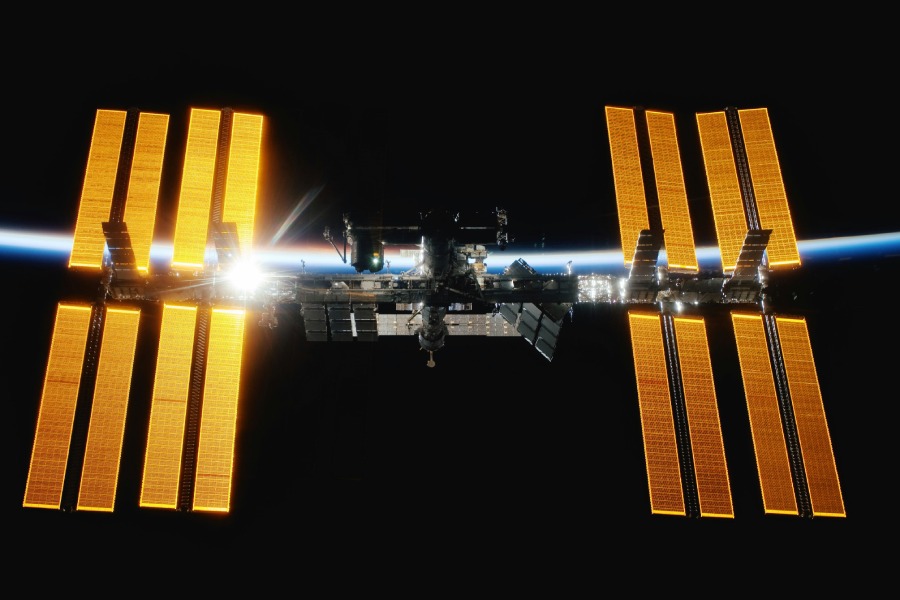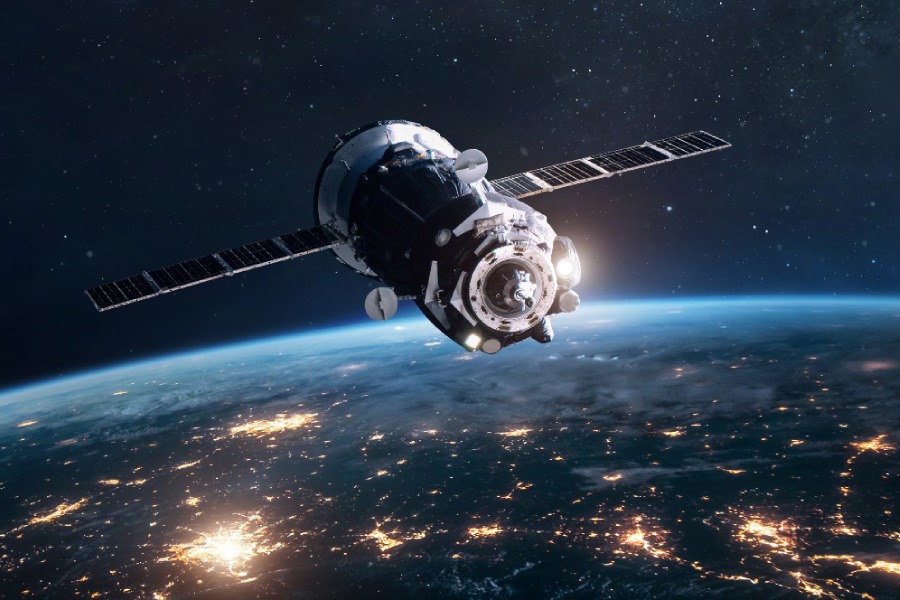As the International Space Station rapidly orbits Earth every 90 minutes, gliding across the sky, one can’t help but wonder many things. For example, how fast does the space station travel? How often does the space station circle the Earth?
In this article, we will explore the details of the space station’s orbital velocity and what it takes to maintain altitude in low Earth orbit. Understanding the speeds involved enhances appreciation of the remarkable feat of engineering the station represents.
Let’s get started!

How Fast Does the Space Station Travel?
The International Space Station orbits Earth at 250 miles above its surface. To maintain this altitude, it travels at a remarkable speed of 17,500 miles per hour, completing a full orbit around the planet every 90 minutes.
Although astonishing at over 17,000 mph, the space station’s high velocity is crucial to counteract Earth’s gravity, ensuring the station remains in a stable low Earth orbit. This speed is necessary for the space station to resist the gravitational pull effectively.
Additionally, the space station stays close to Earth for practical reasons. This proximity facilitates resupply missions and scientific experiments that benefit from microgravity conditions.
Comparatively, the Space Shuttle also traveled at an average speed of 17,500 mph, matching the space station’s pace. In contrast, popular commercial jets are considered extremely fast at 500 mph.
But how many times does the space station orbit the Earth in a day? The stark difference highlights the incredible speed at which the space station moves, completing 16 orbits around Earth every day to remain in its designated orbit.
What Is Orbital Velocity?
Orbital velocity refers to the requisite speed that an object must attain to sustain a stable orbit around Earth or any other celestial body. This velocity is characterized by its horizontal orientation, perpendicular to the gravitational force pulling the object toward the center of the orbiting body.
Essentially, the orbital speed functions as a delicate equilibrium. It counters the gravitational pull with a centrifugal force just sufficient to prevent satellites from succumbing to Earth’s gravitational influence and falling back to the surface.
Lower orbits require faster speeds
The International Space Station hovers just 250 miles above Earth. Despite being so close, it feels 89% of the gravity we do on the ground. The ISS zooms horizontally at a whopping 17,500 miles per hour to prevent falling back to Earth. This rapid motion, moving sideways against gravity, generates centrifugal force.
The force acts perpendicular to gravity, keeping the space station in a stable circular orbit rather than succumbing to gravity’s pull. The high orbital speed acts as the counterforce, allowing the ISS to maintain a steady low Earth orbit.
Higher altitudes allow slower velocities
Satellites positioned far from Earth’s gravity move at a slower orbital pace. Communication satellites for geostationary orbits are about 22,000 miles high, where Earth’s gravitational pull is weaker.
This happens because gravity decreases rapidly with distance, following an inverse square law. Satellites at this distance only need to travel at approximately 6,800 mph, requiring less kinetic energy to counter the weaker gravitational attraction.

Factors Influencing ISS Velocity
Altitude of the orbit
The International Space Station’s (ISS) velocity is influenced by its altitude in orbit. As the altitude increases, the gravitational force decreases, allowing the ISS to maintain a stable orbit at a lower orbital speed.
According to Kepler’s laws, the square of the orbital period is directly proportional to the cube of the orbit’s semi-major axis. In practical terms, this means that at higher altitudes, such as in geostationary orbits around 22,236 miles above Earth, the ISS requires a slower orbital speed to counterbalance the reduced gravitational pull.
Conversely, a higher orbital speed is necessary at lower altitudes, like the ISS’s typical orbit around 408 kilometers (253 miles). This is to prevent falling back to Earth due to stronger gravitational forces.
Gravitational forces
The velocity is also influenced by gravitational forces, particularly Earth’s gravitational pull. Gravity acts as the centripetal force that keeps the ISS in orbit around the Earth. As the ISS orbits the Earth, it constantly experiences gravitational attraction towards the planet, causing it to maintain its velocity.
This velocity is crucial for the ISS to counterbalance the gravitational pull and continue orbiting without falling back to Earth. The ISS orbits Earth at an average speed of approximately 17,500 miles per hour, a velocity carefully balanced by the interplay of gravitational forces to ensure its stable orbit.
Orbital adjustments and reboots
The International Space Station (ISS) undergoes orbital adjustments and reboots to mitigate the impact of atmospheric drag, sustaining its altitude and velocity. Atmospheric particles exert a subtle yet persistent force, gradually reducing the ISS’s speed and altering its orbit.
These maneuvers involve firing thrusters to boost the station’s velocity, compensating for the drag-induced deceleration. By executing these reboots periodically several times a year, the ISS preserves its orbital trajectory, averting a gradual descent into Earth’s atmosphere.
Maintaining an orbital velocity of approximately 17,500 miles per hour is crucial for the ISS to counteract atmospheric resistance. This velocity is necessary to sustain its position in low Earth orbit.
Atmospheric drag
The station experiences a gradual velocity loss due to atmospheric drag. As the ISS orbits Earth at an average altitude of approximately 250 miles, it encounters trace amounts of Earth’s atmosphere. Despite the thinness of the atmosphere at that altitude, even these minute particles create friction with the ISS, resulting in atmospheric drag.
Over time, this drag acts as a decelerating force, causing the ISS to lose speed gradually. To counteract this effect, periodic re-boost maneuvers use onboard thrusters to maintain the ISS’s orbital velocity and ensure its stable orbit around Earth.
Mass and configuration
Mass and configuration influence the International Space Station’s (ISS) velocity. Alterations in mass or configuration, such as adding or removing modules, can marginally impact its velocity.
Nevertheless, these changes are typically minor when compared to other influential factors. The ISS orbits Earth at an average speed of approximately 17,500 miles per hour, a velocity carefully maintained to balance gravitational pull with centrifugal force.
Precise adjustments are made to ensure the ISS remains in a stable orbit. These adjustments consider the dynamic interplay of gravitational forces and the complexities of its operational configuration.
Conclusion
After exploring the tremendous velocities the International Space Station attains in low Earth orbit, we hope you have a renewed appreciation for this incredible flying laboratory. So, how fast does the space station travel?
Achieving speeds over 17,000 miles per hour, the station travels fast enough to circle the globe every 90 minutes while floating in microgravity. Now you understand the precise speeds required to maintain such a delicately choreographed orbital dance at different altitudes from our planet.
